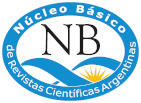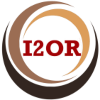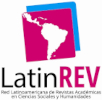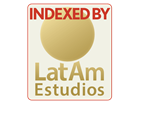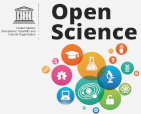Peer review process
In Artilugio, each submitted work is subject to an external peer review process to ensure the quality of the contents. Articles under the sections “Reflexiones/Artículos” and “Dossier” are subject to a double-blind peer review process that guarantees anonymity between authors and reviewers. Our Editorial Board ensures confidentiality between the parties is maintained. Works under the section “Indeterminación” are subject to a single-blind review process. More information is available in Evaluation Policies.
“Reflexiones/Artículos” and “Dossier"
Articles submitted for publication under the sections “Reflexiones/Artículos” and “Dossier" are subject to an editorial procedure that includes several stages. In the first stage, submissions are reviewed by the Editorial Board to assess whether they are suitable for publication. Suitable papers are those that fulfill our editorial criteria, are coherent and of interest to the journal, and have not committed any form of plagiarism or self-plagiarism. The Editorial Board can reject articles that do not meet these guidelines.
Articles that pass this first stage are sent to two experienced researchers selected by the Editorial Board for ad hoc review. These selected reviewers must not be affiliated with the authors' institutions, must hold academic qualifications that are either similar or superior to those of the author(s), and must have expertise in the corresponding subject area.
Articles submitted for publication under these two sections are subject to a double-blind peer review process that ensures anonymity between authors and reviewers. In an evaluation form, reviewers focus their assessment on formal, conceptual, and methodological coherence, on the contributions each article makes to the corresponding field of study, and on the unique approach adopted by the author(s) in relation to the central theme proposed in each issue. Reviewers may suggest relevant improvements that follow the editorial guidelines to enhance the quality of the papers.
Reviewers are given 30 days to read the article, reach a verdict, and determine whether the submitted paper has been accepted, accepted (with modifications), or not accepted. Based on the recommendations made by the reviewers, our Editorial Board will decide whether the article will be published or not. Authors are then informed of the decision and the reasons behind it. If a paper is “accepted (with modifications)”, its resubmission will then be reviewed by at least one of the previous external reviewers or by a member of the Editorial Board to either accept or reject the modifications. This final decision cannot be appealed.
If there is a disparity of opinions (one positive review and one negative review), the article will be sent to a third committee. Nevertheless, if the result is not accepted and accepted (with modifications), the Editorial Board will judge whether the article should be rejected.
Once this assessment process has finished, the accepted articles will be proofread and formatted.
Formatted articles will be sent again to the author(s) for the last review before publication. This last review should be mainly focused on typographic and grammatical errors. Corrections that significantly change the article will not be accepted.
The estimated time between receipt of articles and approval is 5 months.
Author(s) must send a statement of responsibility, a photo licensing agreement, and a transfer of rights agreement (see a template and more details in Sworn Statement).
“Indeterminación”
Works submitted for publication under the section “Indeterminación” are subject to an editorial procedure that includes several stages. In the first stage, the submitted artistic productions will be reviewed by the Editorial Board to assess whether they are suitable for publication. Suitable productions are those that fulfill our editorial criteria, are in line with the journal’s contents and with the proposed central theme of each issue, and have not committed any form of plagiarism. The Editorial Board can reject works that do not meet these guidelines.
Based on the submitted artistic productions, the Editorial Board will name an external Ad Hoc Committee that will evaluate the formal, conceptual, and aesthetic coherence of each production, its contribution to the artistic field it belongs to, and the unique approach adopted in relation to the central theme proposed in each issue. Each production will be subject to a single-blind review process, meaning that the identity of the reviewers will not be revealed during the evaluation process to ensure the quality of the contents.
Reviewers are given 60 days since the submission deadline to reach a verdict. The Editorial Board must inform the author(s) of the decision in all cases. The decision made by the Ad Hoc Evaluation Committee cannot be appealed.
Once this assessment process has finished, the accepted articles will be proofread and formatted. Formatted articles will be sent again to the author(s) for the last review before publication. This last review should be mainly focused on typographic and grammatical errors. Finally, the author(s) (or the group of artists) of the selected works must send a statement of responsibility, a photo licensing agreement, and a transfer of rights agreement.
The estimated time between receipt of articles and approval is 5 months.
Further information >> Submissions.



